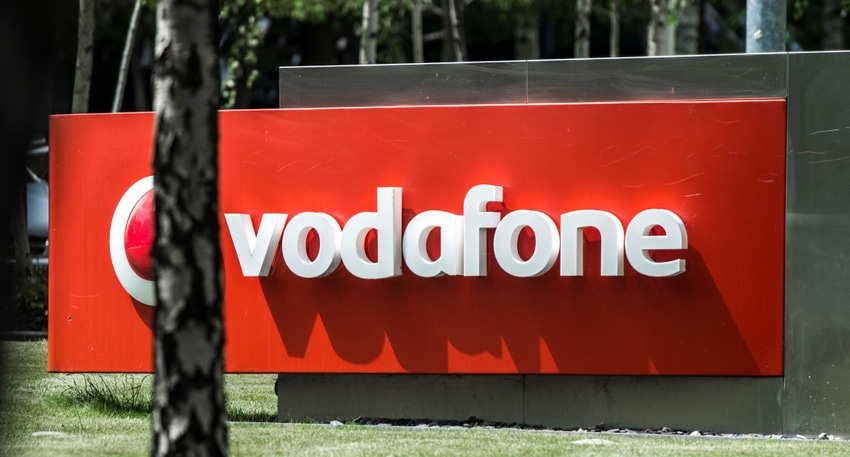Vodafone has posted a solid set of first-half financials but the headline figures mask certain weaknesses in markets where competition is fierce.
November 16, 2021

Vodafone has posted a solid set of first-half financials but the headline figures mask certain weaknesses in markets where competition is fierce.
Essentially, just days after CEO Nick Read spoke out on consolidation and the benefits of a stable market structure without excessive competition in a UK press interview, the telco has published a set of results that prove his point. And its 1H report backs up Read’s comments.
“Germany has benefited from a more sustainable competitive environment compared to many other markets in Europe and those markets would benefit from in-market consolidation,” the Vodafone report reads. “We are pragmatically pursuing value accretive in-market consolidation to deliver sustainable market structures in our major European markets.”
There you have it. If there were any doubts over Nick Read’s intent in that newspaper interview, they have surely now been allayed. Vodafone is up for some M&A.
Given the market dynamics, it’s tempting to assume that Germany is not on the list for consolidation. But given that Vodafone has still some work to do in the fixed broadband market – its cable network will need a hefty upgrade to match the fibre builders – let’s not rule out a fibre altnet acquisition. However, a partnership with a fibre builder, probably involving co-investment, is probably a more likely scenario, as mentioned by Read at the weekend.
Germany accounted for more than 38% of the Vodafone Group’s adjusted earnings in the six months to the end of September, and, with service revenues growing by 1.2% organically to €5.8 billion and EBITDA increasing by 7.7% to €2.9 billion, the market generated an EBITDA margin of almost 45%, bettered only by its Vantage Towers unit.
As well as highlighting the stable competitive environment in Germany, Vodafone noted that it is the only top five European market to have witnessed ARPU growth in mobile and fixed connectivity since 2017.
It’s worth pointing out that Vodafone is not the only one turning in a decent performance in Germany. Earlier this month Telefonica raised guidance at its German unit after a strong Q3, especially in mobile where churn reached new lows, while last week incumbent Deutsche Telekom reported growth in revenues, earnings and customer numbers in its home market in the same quarter.
“Alongside the scale and rational market structure, Germany also presents the most significant converged connectivity opportunity of our larger markets, with only 18% of our mobile customers taking a fixed connectivity product, compared with 54% in Spain. Similarly, only 14% of our fixed connectivity customers in Germany take a mobile connectivity product, compared with 90% in Spain,” Vodafone said.
You have to question the “opportunity” of convergence though, when a market in which it has yet to take hold is turning in significantly better results than one where it is fast becoming the norm. Naturally, there are other issues at play too, but telcos do need to exercise caution.
Those issues in Spain mainly stem from intense competition, mainly at the lower end of the mobile market, as incumbent Telefonica highlighted in its group Q2 report.
“Over the last four years, the competitive environment in Spain has intensified as the number of customer-facing brands has increased from around 60 in 2017 to almost 80 in 2021,” Vodafone said. “This has resulted in significant price deflation, with mobile contract ARPU across the market declining by 16% since 2017. Given the relatively high operating leverage within the sector, this price deflation has had a significant impact on our financial performance in Spain.”
Vodafone insists it has stabilised its financial performance in Spain, and indeed on an organic basis service revenue was down by just 0.6, its best effort for some time. Adjusted EBITDAaL fell by the same amount. But in Italy, where intense competition also reigns, service revenues took a 2.5% hit and adjusted EBITDAaL was down by 14.7%, the latter admittedly affected by a €105 million legal settlement. Once again, greater competition at the value end of the mobile market took its toll.
The UK, the market at the centre of all the M&A talk, performed pretty well, showing growth in revenues and earnings, but that’s not to say that Vodafone couldn’t do with some scale to help it along.
And as usual, there was good growth at Vodacom and in the telco’s other markets, helping to support an overall group result of 5% reported revenue growth to €22.5 billion and 6.5% organic growth in adjusted earnings to €7.6 billion. As such, the telco has committed to reaching the upper end of its guidance for the full year.
But let’s be honest, the numbers are not the most interesting thing here. We’re all just waiting to see what Vodafone will do next as it hits the M&A trail.
About the Author(s)
You May Also Like








.png?width=300&auto=webp&quality=80&disable=upscale)


_1.jpg?width=300&auto=webp&quality=80&disable=upscale)


.png?width=800&auto=webp&quality=80&disable=upscale)